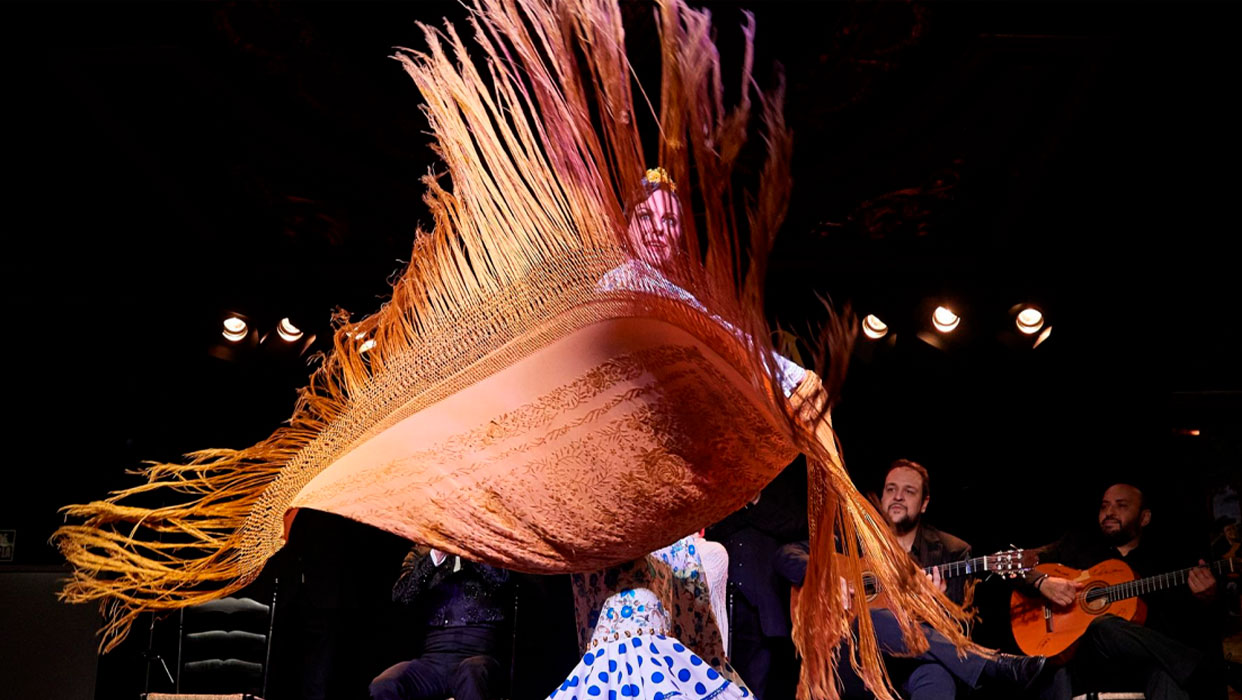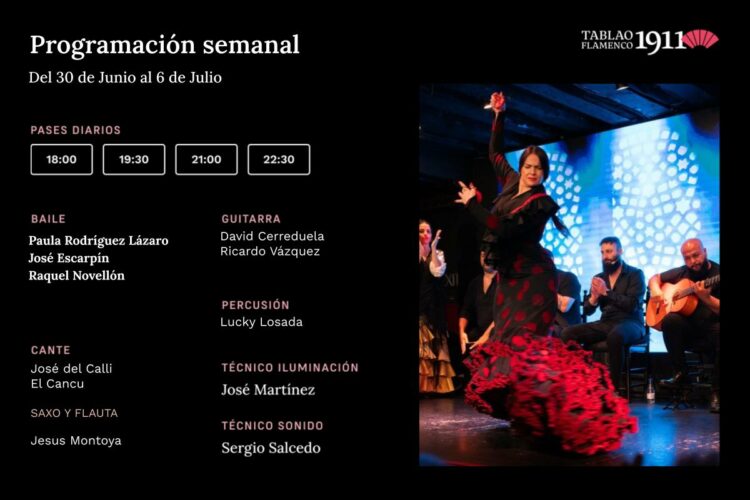
Flamenco Madrid Daily Show
A week of great names and pure flamenco soul on the stage of Tablao Flamenco 1911.
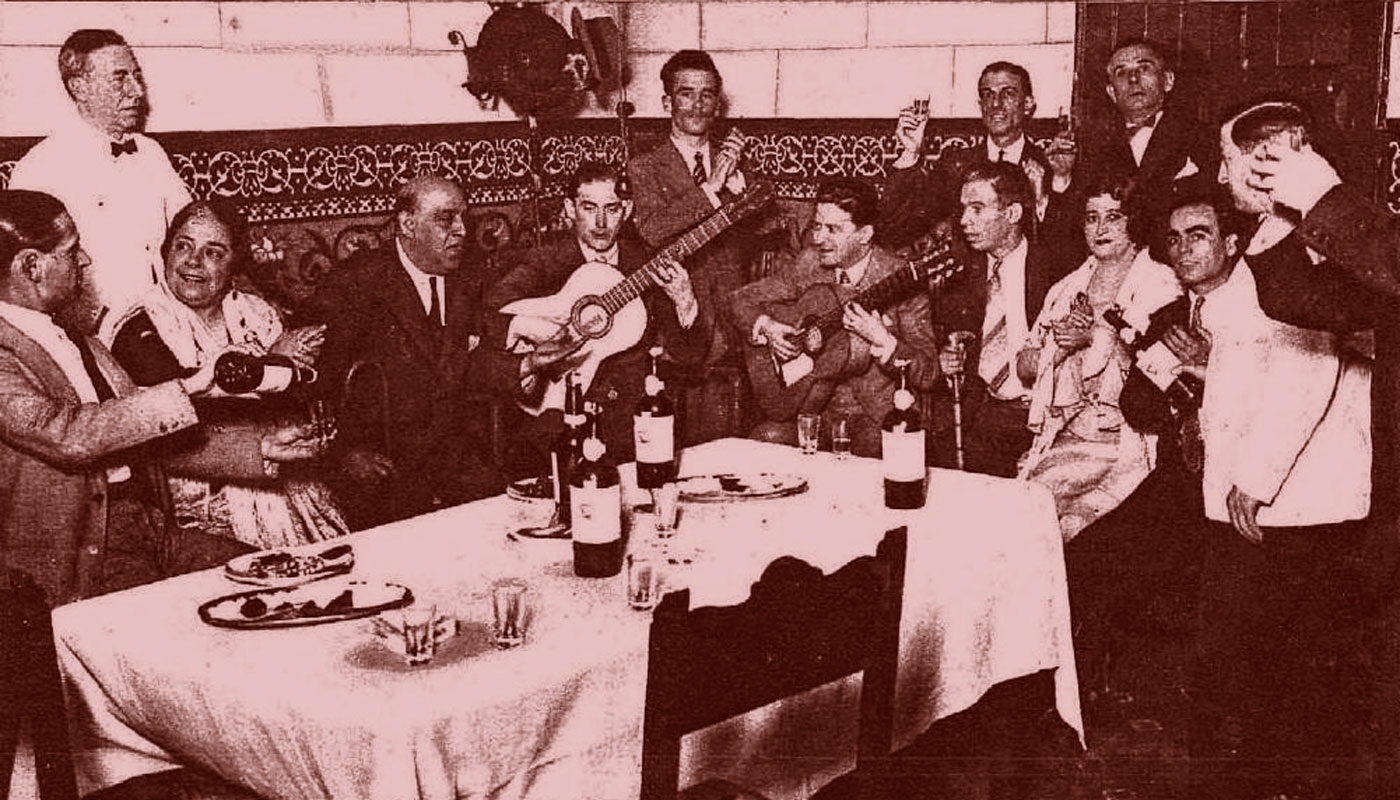
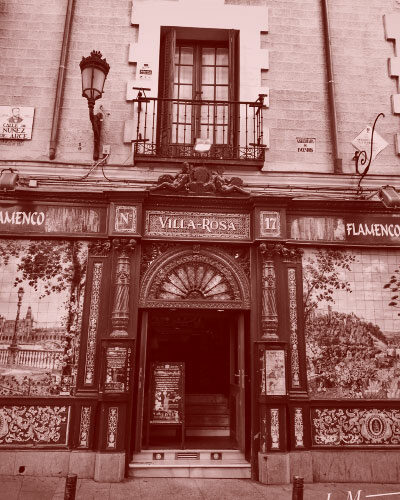
The tablao is located in what is now the Plaza de Santa Ana, number 15, on the corner of Núñez de Arce and Álvarez Gato streets, called by the Castizos, “Callejón del Gato”.
It opened its doors as Gran Colmado in 1911, run by masters of bullfighting; the picadors Farfán and Céntimo, and the banderillero Alvaradito, and was in operation as an Andalusian frying house and tapas bar.
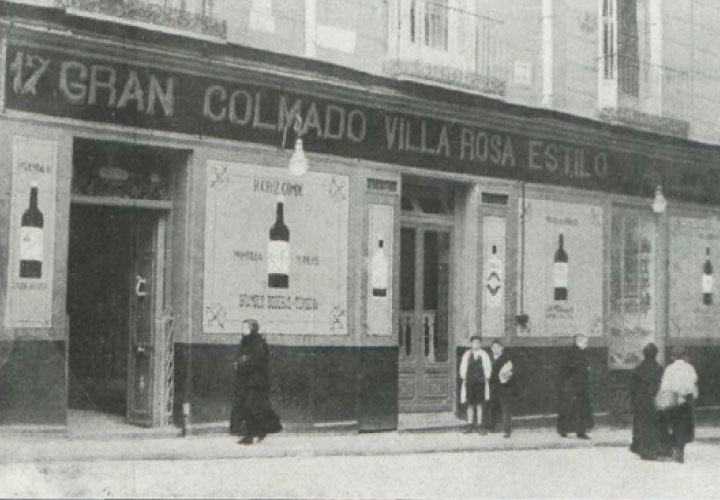
Reference: Front of Colmado grocery store
Image published in: mistabernasfavoritas.blogspot.com
"It will be in 1918, when it will reopen fully restored as we know it today."
The new premises stand out for their profuse decoration. With a beautiful carved wooden counter and an artistic coffered ceiling supported by columns with lobed pointed arches of great showiness, reminiscent of the Alhambra de Granada, and polychrome tiled walls, all in Arabic Andalusian style.
The walls are covered with mosaics, painted on tiles with scenes of flamenco and bullfighting themes and were made by the best ceramists of Madrid at that time, Antonio Ruiz de Luna and Julián Santacruz. In fact, Antonio Ruiz was the author and creator of all the ceramics that indicate the names of all the streets in the center of Madrid.
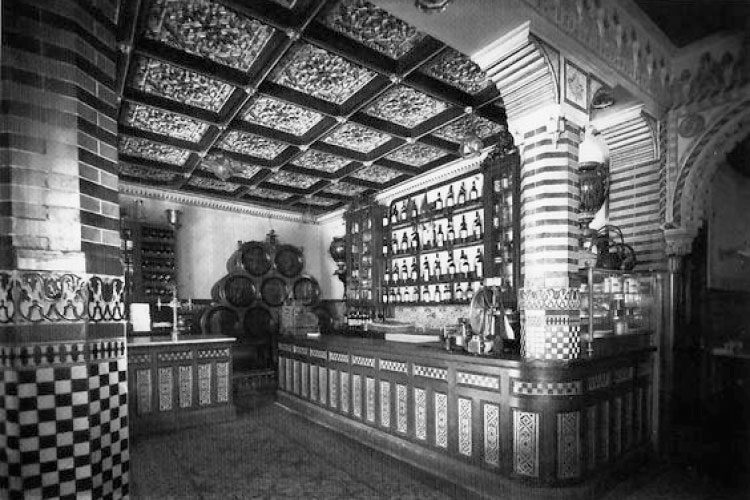
Reference: Interior of the Tablao, at Plaza de Santa Ana nº 15, 1940. Diego González Ragel. Ragel Archive.
Published in : viejo-madrid.
The uniqueness of the premises was completed in 1917 with the exterior façade created by the Sevillian master Alfonso Romero Mesa.
This striking façade, protected as cultural heritage of the city of Madrid, is formed by pictures and reliefs of ceramic tiles, also painted, and stands out from any point of the busy Plaza de Santa Ana.
The murals depict iconic places in Spain such as La Plaza de Colón de Madrid, La Plaza de España sevillana, La Alambra, Córdoba, La Cibeles, El Palacio de Cristal del Retiro, the Jardines de Murillo y Málaga desde El Monte de Sancha.
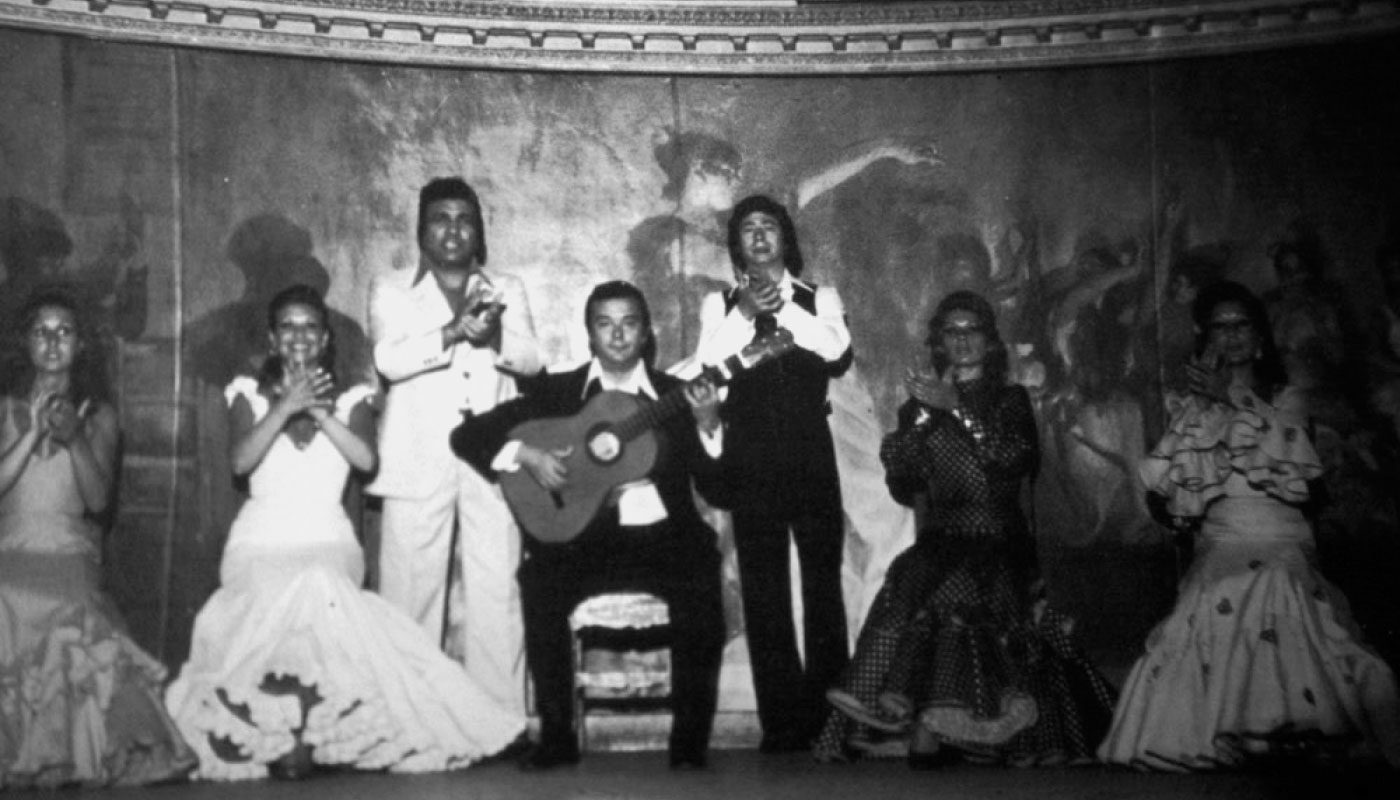
Reference: Flamenco painting on the old stage in the 1960s
"Thus began the legend of what will become the cathedral of flamenco in Madrid"
By that time, the figure of the Don Antonio Chacón, A cantaor from Jerez who brings together the whole flamenco tradition with a new aesthetic, moving away from the classic image of the bandit. Maestro Chacón brings a cultured and elegant image supported by his refinement, deep knowledge of flamenco and exquisite education.
In 1921, taking advantage of the relevance of his figure, the owner of the Tablao put at the disposal of the master the premises and signed a contract with Don Antonio Chacón linking him to the Tablao for life.
The hiring of the singer known as El Rey del Cante Flamenco Andaluz, with the guitarist from Madrid D. Ramón Montoya, attracted the best dancers, guitarists and singers, who were followed by amateurs of considerable economic power.
At that time they performed at the flamenco meetings and parties of the colmado all the great singers of the time, Manuel Escacena, Fernando el Herrero, Pepe de la Matrona, Bernardo el de los Lobitos, La Niña de los Peines, Manuel Torre, Pepe Marchena… or guitarists such as Miguel Borrull, Manolo de Huelva, Pepe de Badajoz, etc… Thus, The Tablao became a meeting place where the old masters alternated with the new generations and the legend of what was to become the cathedral of flamenco in Madrid began.
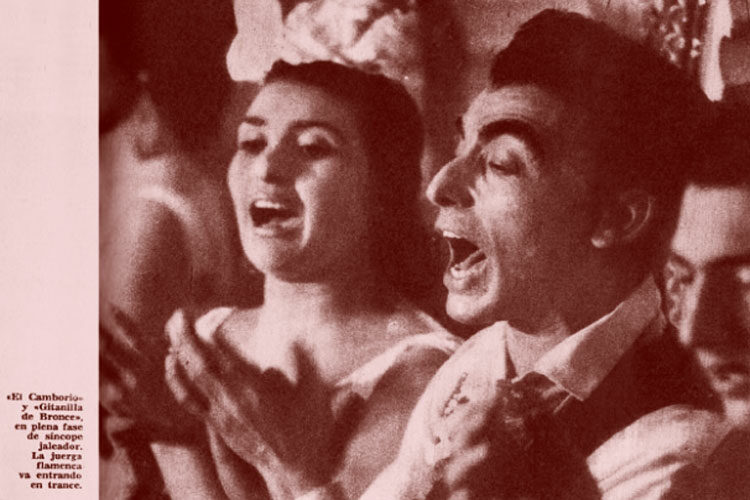
Reference: Article from “deflamenco.com”: HACE 50 AÑOS… Los tablaos históricos de Madrid, which reproduces images from the 1963 article “Madrid, Cátedra de Flamenco ” Visita sentimental y pintoresca a los ‘tablaos’ más famosos de la Villa y Corte’, signed by J.L. Castillo-Puche (Murcia, 1919 – Madrid, 2004).
Published in: deflamenco.com
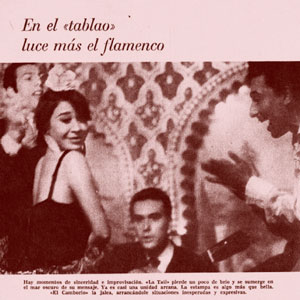
The place keeps among the ornaments of its coffered ceilings, its basements and tunnels, thousands of anecdotes and secrets of this era in which flamenco lived its splendor in privacy, but was frowned upon in society, but we will talk about that in its own chapter, “The secrets of Villarosa”.
Don Antonio Chacón continued to reign at the Tablao until he passed away in 1929, but the premises continued to be the heart of Madrid’s flamenco, until 1963, when it closed its doors.
Although it reopened a year later, it did not recover its former splendor until the 1970s.
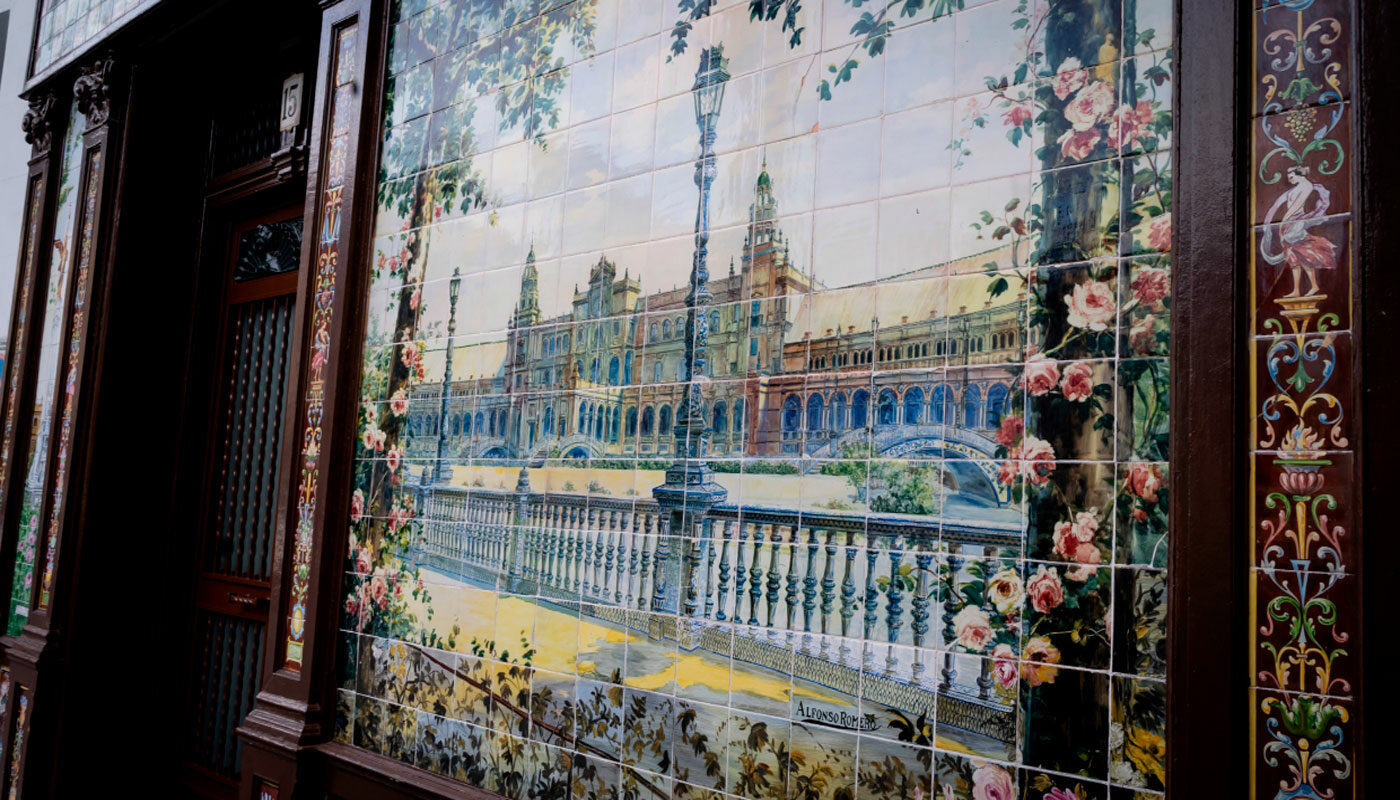
In the 80’s, it reopens as a nightclub and lives the best years of La Movida. Especially after Pedro Almodóvar, the famous Spanish film director, chose the Tablao to film the famous scene of his movie “Tacones Lejanos”, in which the singer Miguel Bosé, dressed as his character, takes off his glove in the style of Gilda under the watchful eye of the actresses Victoria Abril and Marisa Paredes. In this period, the striking aesthetics of the local becomes part of the iconography of this era.
"The striking aesthetics of the premises become part of the iconography of this era."
Image from the shooting of the film Tacones lejanos. Director Pedro Almodovar gives directions to Miguel Bosé.
From 2002 to 2009, being still a party hall, the Flamenco program returns to the Tablao 3 days a week.
But it will not be until 2011, after a century of history, that Tablao returned to be what it is.
For become again what it is, "The Sanctuary of Flamenco in Madrid"
Back into a flamenco tablao exclusively and accompanies the daily shows of artists of national and international prestige, with good wine and Spanish cuisine.
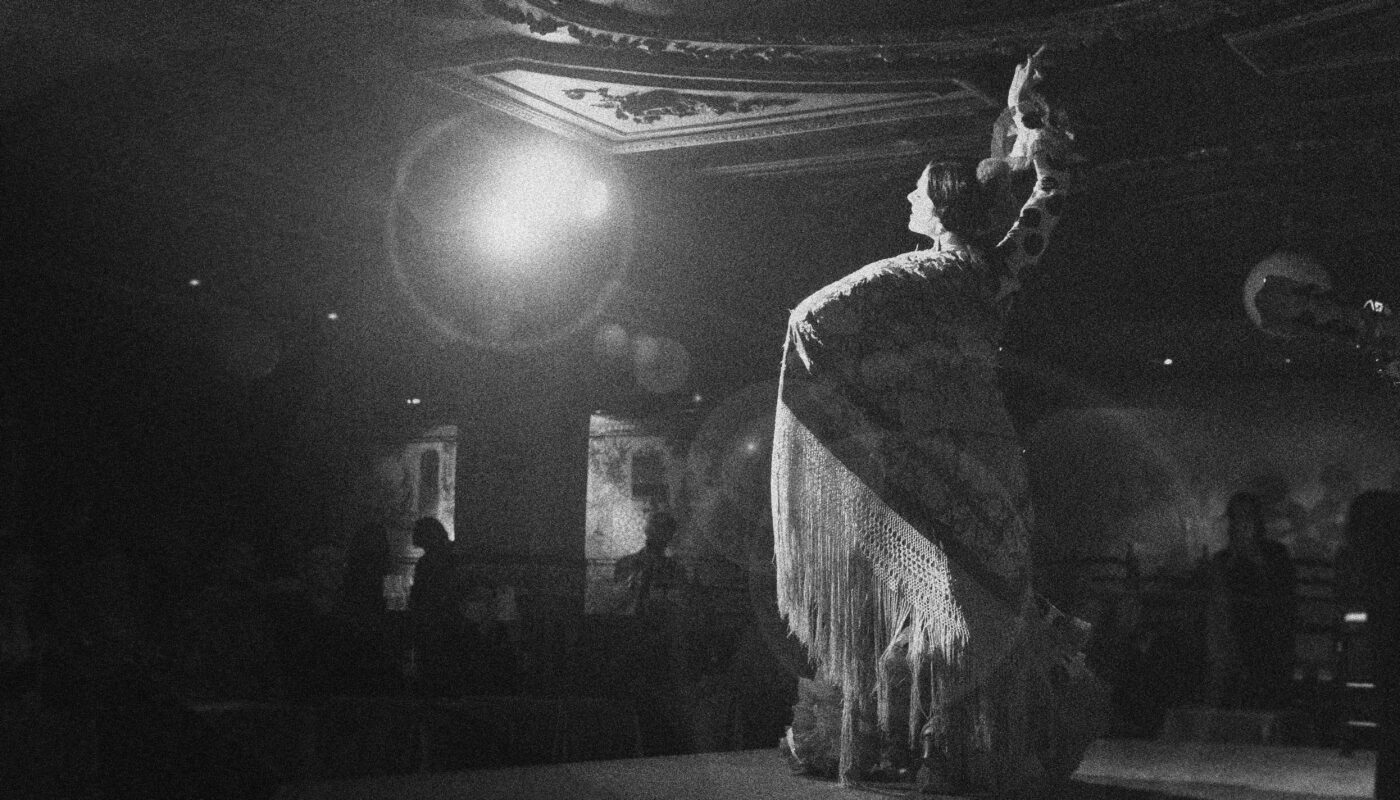
March 2022. Two years have passed since the crisis that caused the COVID19 pandemic, confinement and restrictions. In this scenario, the tablao reopens its doors with a name that honors its history. Tablao Flamenco 1911. Sponsored by the master Antonio Canales the tablao returns with three daily flamenco shows and a unique program, to reclaim the place it rightfully deserves.
Flamenco Tablao 1911. The Cathedral of Flamenco in Madrid
The 1911 offers 3 daily shows, special programming and guest artists, preserving every detail that has made this venue historic and unique, The Cathedral of Flamenco in Madrid.
After more than 100 years of history, we can assure that the best exponents of both singing and dancing have performed at the Tablao, such as Antonio “El Chaqueta”, Imperio Argentina, Miguel de Molina, Juanito Valderrama, Antonio Molina, Pastora Imperio, Manolo Caracol, Lola Flores, Antonio Mairena, Pepe Marchena, Paco de Lucía, Juan Varea, Amparo Garrido, Carmen Amaya…
The list is endless and unparalleled and will continue to grow in this new stage.
